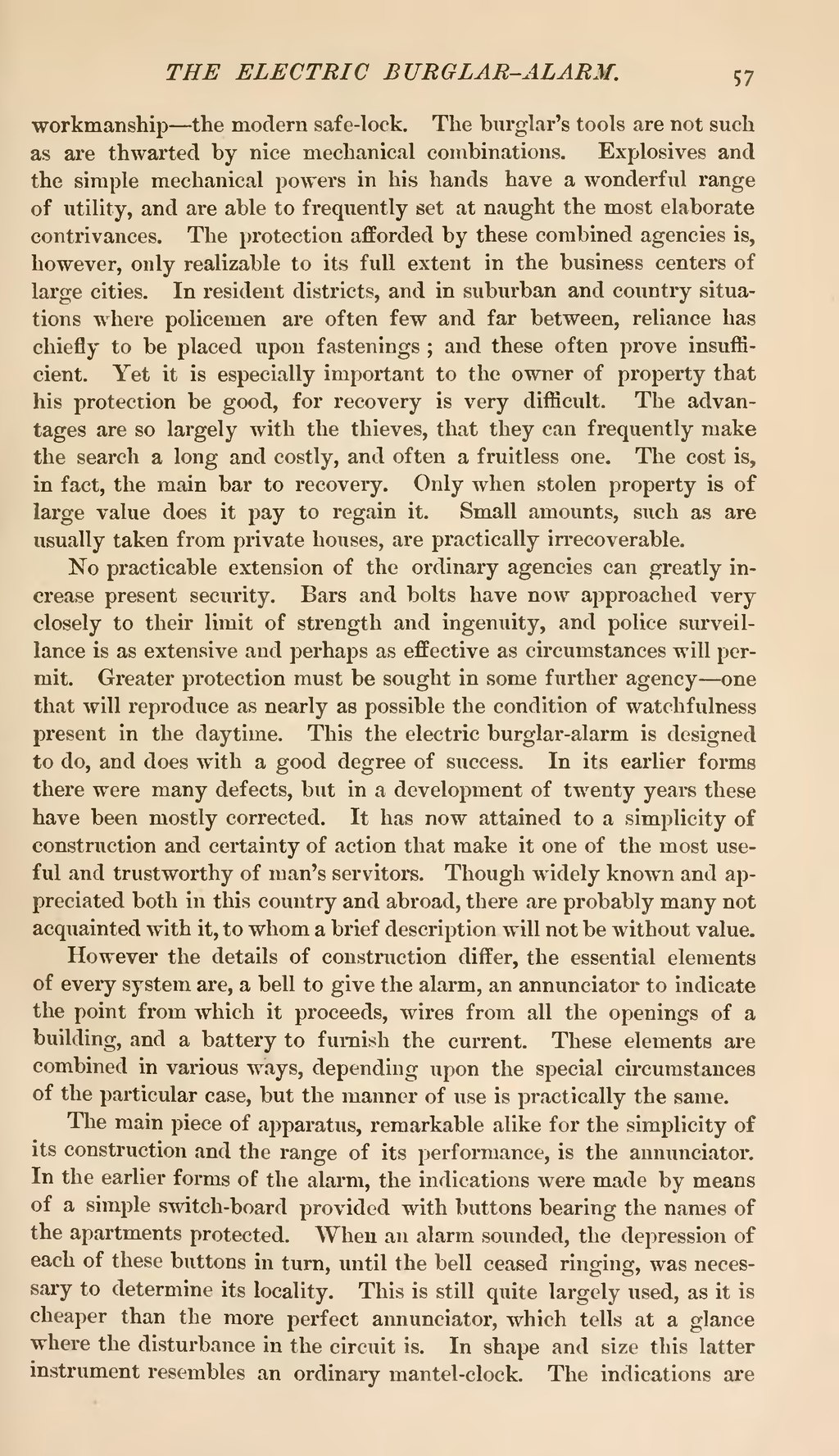workmanship—the modern safe-lock. The burglar's tools are not such as are thwarted by nice mechanical combinations. Explosives and the simple mechanical powers in his hands have a wonderful range of utility, and are able to frequently set at naught the most elaborate contrivances. The protection afforded by these combined agencies is, however, only realizable to its full extent in the business centers of large cities. In resident districts, and in suburban and country situations where policemen are often few and far between, reliance has chiefly to be placed upon fastenings; and these often prove insufficient. Yet it is especially important to the owner of property that his protection be good, for recovery is very difficult. The advantages are so largely with the thieves, that they can frequently make the search a long and costly, and often a fruitless one. The cost is, in fact, the main bar to recovery. Only when stolen property is of large value does it pay to regain it. Small amounts, such as are usually taken from private houses, are practically irrecoverable.
No practicable extension of the ordinary agencies can greatly increase present security. Bars and bolts have now approached very closely to their limit of strength and ingenuity, and police surveillance is as extensive and perhaps as effective as circumstances will permit. Greater protection must be sought in some further agency—one that will reproduce as nearly as possible the condition of watchfulness present in the daytime. This the electric burglar-alarm is designed to do, and does with a good degree of success. In its earlier forms there were many defects, but in a development of twenty years these have been mostly corrected. It has now attained to a simplicity of construction and certainty of action that make it one of the most useful and trustworthy of man's servitors. Though widely known and appreciated both in this country and abroad, there are probably many not acquainted with it, to whom a brief description will not be without value.
However the details of construction differ, the essential elements of every system are, a bell to give the alarm, an annunciator to indicate the point from which it proceeds, wires from all the openings of a building, and a battery to furnish the current. These elements are combined in various ways, depending upon the special circumstances of the particular case, but the manner of use is practically the same.
The main piece of apparatus, remarkable alike for the simplicity of its construction and the range of its performance, is the annunciator. In the earlier forms of the alarm, the indications were made by means of a simple switch-board provided with buttons bearing the names of the apartments protected. When an alarm sounded, the depression of each of these buttons in turn, until the bell ceased ringing, was necessary to determine its locality. This is still quite largely used, as it is cheaper than the more perfect annunciator, which tells at a glance where the disturbance in the circuit is. In shape and size this latter instrument resembles an ordinary mantel-clock. The indications are
